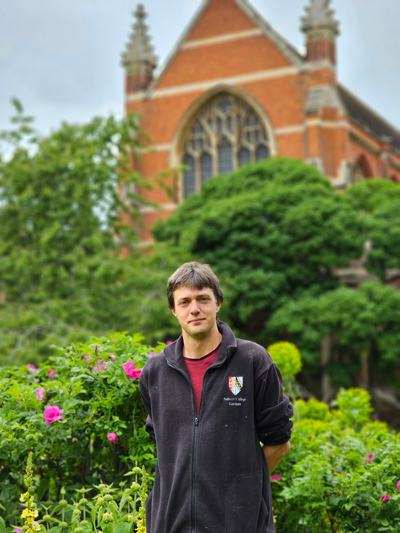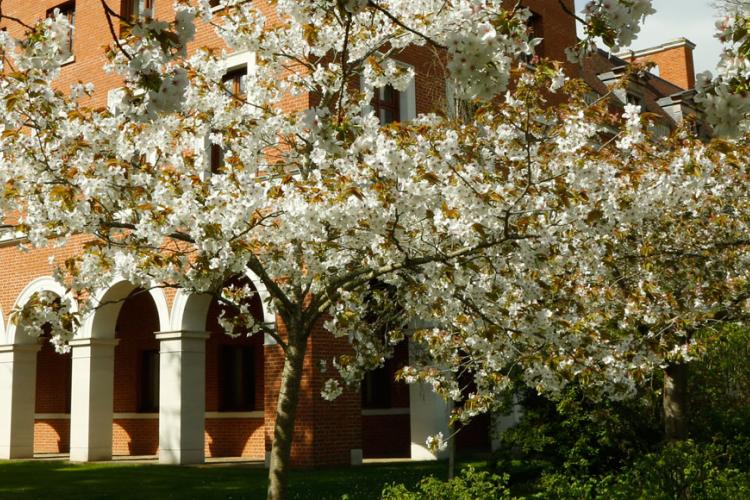Alex Turner, the Head Gardener at Selwyn, is revolutionising the garden’s landscape by adapting to climate change and introducing exotic plants from diverse corners of the globe. He explains how this could be the future of gardening.
 When talking about climate change it’s easy to focus on the very obvious and simple truth that the world is heating up. Every year, we are shown more and more images of Australian towns burning in forest fires, farmers in Suffolk pointing at failing crops and central Europe burning up in record temperatures over 43° Celsius.
When talking about climate change it’s easy to focus on the very obvious and simple truth that the world is heating up. Every year, we are shown more and more images of Australian towns burning in forest fires, farmers in Suffolk pointing at failing crops and central Europe burning up in record temperatures over 43° Celsius.
But the heat is just one part of climate change. Climate change also encompasses a general increase in the extremes that our weather can dish out — it’s why we no longer say “global warming”. I think 2022 was the greatest example of how unpredictable our weather has become and how difficult it is to cope with: the Selwyn College gardens experienced what I would describe as a horticultural nightmare. For over 100 days across late spring and early summer, we experienced nearconstant high temperatures of 25-35°C, with temperatures of 40°C on a handful of days. It was Europe’s worst drought since the 16th century.
While we are determined to craft a college garden fit for all seasons, using a range of plants from cold and warm environments around the world, we are rapidly discovering that not even the hardiest of plants can adapt to the extreme fluctuations we have seen recently.
Our Dry Border, with its southern African plants, was crafted to survive intermittent rain and very high temperatures — so last summer, we only had to water the border just once! On the other hand, our Student Border, with its plants from the northern hemisphere, struggled to survive the 100 days of heat without weekly watering.
Then, in December, when we were caught off guard by a week-long period of -5°C to -10°C temperatures, the temperatures proved too much for our Dry Border, and almost all the plants were killed. But since the Student Border was well adapted to colder climates, the temperature drops posed no trouble for them. They simply hunkered down under the snow and waited for it to pass. It’s not just the unpredictable weather that we’re dealing with, but also the shifting attitudes towards what a garden should look like. Gone are the days of simply watering everything in sight. Nowadays, people are more conscious of water usage and expect gardens to be sustainable. Yet, this mindset overlooks the purpose of a garden, especially at our college. We can’t just let everything wither away during droughts. Besides, that’s far from visually appealing. My team and I have simply become more creative with our approach to creating gardens that can withstand these weather extremes.
We are going to continue to look towards regions in Central Europe and Eastern Asia that also experience these weather conditions as sources for new gardens.
The Japanese Woodland Garden is very important because even within the confines of college courts, in areas as small as a few square meters, various microclimates can be created. These microclimates can have a powerful impact, as I learnt at King’s College, where I found that the plants situated against the south-facing brick wall of Clare College were subject to scorching temperatures of up to 53°C on the hottest day of the year. This was due to the wall slowly being superheated by the relentless sun, showing the impact of even the tiniest details on the local climate.
The effects of climate change won’t end any time soon, so as we assess the damage from 2022’s extreme weather we’re determined to replace the plants we’ve lost with ones that can thrive in these new conditions and to place them in better-suited locations too. We have to keep actively adapting to ensure that they continue to meet the needs of today while honouring the designs of the past. Who knows, these new gardens could be the future of gardening!


